What modules do our ships need?
Article "Patrolling modules will not save" the problematic issues of our "modular ships" were rigidly identified. However, the question arises: what is the situation with the navies of foreign countries and is there any positive in the modular approach to shipbuilding? And most importantly: what kind of "modularity" does our the fleet?
Foreign experience
MESO program, Germany
The development of the MEKO concept was started by the West German company Blohm und Voss in 1969 for export ships of moderate displacement. The concept was based on the idea of standardization in the form of functional modules of standard (different) sizes for the most common ship weapon systems. In this case, the ship's hull was considered in the form of a rigid load-bearing platform with cells, into which modules of shipborne weapon systems are inserted, aligned and fastened with bolted connections.
Standard container sizes weapons 2,66x4,0x4,7m (for ships of small displacement - 2,66x3,2x4,0 m). For the modules of electronic weapons, unambiguous restrictions on the height and width of 2,15x2,44 m and 4 options for the length of the container (3,0, 3,5, 4,0 and 4,5 m) were adopted. To accommodate the equipment of control and communication posts, standard pallet sizes of 2,0x2,0 m were adopted.
As of 1982, the Blohm und Voss line of proposals consisted of 8 types of ships (displacement from 200 to 4000 tons) and 209 types of modulated weapons systems for them and was further increased.
The cost of modernizing ships of the MEKO class was calculated as 35% of the construction cost (at 50% for a conventional ship) with a reduction in the time of work from 12 months to 8.
"Reverse side": the transition to the MEKO concept for frigates and corvettes reduces the mass of their weapon systems by at least 30%.
Nevertheless, the maximum consideration of customer requests allowed Blohm und Voss to receive large orders, for which more than 50 ships were built.
SEAMOD project VPS concept, USA
In 1972, the consultative group of the combat systems of the US Navy's logistics command proposed the concept of VPS (Variable Payload Ships, variable payload), that is, the concept of modules built into the structure of the ship, ensuring their rapid modernization (zone-modular design of ships).
The idea was accepted by the command of the US Navy with a detailed study in relation to the new ship of the 3rd generation (EM "Spruence" and frigates "O. Perry"). Since 1979, the US Navy has been implementing a large-scale program SSES (Ship Systems Engineering Standards), the key factor of which was the standardization of modules, subsystems, complexes in terms of installation dimensions, connection of supply media and other technical parameters.
The SEAMOD concept, adopted during the construction of the Spruance-class destroyers and the Nimitz aircraft carrier in the United States, provided for the optimization of large ship volumes in the areas (zones) of weapons devices, the production and maximum saturation of these volumes outside the slipway with increased requirements for the accuracy of joints, and, finally, assembling and fastening them for welding during the slipway period of the ship's construction. Weapon systems are installed and bolted on.
During the implementation of the program, there were both serious successes, first of all, the rapid equipping of the US Navy with vertical launch units (including through the modernization of previously built ships), and difficulties: in fact, SSES was in practice completed by no more than 50% of the planned ...
As a matter of fact, this is not surprising or bad for the US Navy, because common sense won out. Where the implementation of SSES had a tangible and real impact, it was done quickly and decisively. Where problems and doubts arose with the new, they did it according to the classics.
SEAFRAME, Denmark
In contrast to Germany and the USA, in order to reduce the cost of building and maintaining the combat capabilities of ships during their operation in the 80s in Denmark, the idea of modular construction of ships on the principle of a LEGO children's toy designer was put forward: the SEAFRAME system of replaceable ship modules. SEAFRAME solutions were used in the implementation of the StandardFlex 300 program for the construction of 14 Danish corvettes of the Fluvefixen type (and further, in the 2000s, of large warships of the Absalon type).
SEAFRAME assumes mounting and bolting of replaceable weapon modules on the deck of a standard platform ship with common control, navigation and communication systems.
Despite the fact that the task of significantly reducing operating costs was not achieved, the implementation of the StandardFlex 300 program can be considered successful: with a very moderate displacement (less than 400 tons), quite effective small multipurpose corvettes were obtained.
Separately, it is necessary to dwell on the Absalon project, figuratively speaking, the project of a powerful sea truck capable of performing a wide range of tasks up to the transportation of troops. In addition to the SEAFRAME program (modules), Absalon received an extremely interesting and promising solution in the form of a waist cargo deck, where not only modules, but also conventional inclined launchers on standard foundations can be placed.
A number of LCS problematic issues were discussed in the article "Combat systems of OVR corvettes".
The main idea, which was laid in the LCS ships, was to ensure combat stability due to the complex "low visibility + electronic warfare means + very high speed". At the same time, high speed (and high power of the power plant) received a noticeable priority in the load of the project over anti-aircraft fire weapons (ZOS).
All this, when applied in a complex manner in battle, theoretically made it possible, with good chances, to escape even from anti-ship missile attacks. This concept was quite real and in its most complete and perfect form was implemented on high-speed, low-signature air-cushioned Skeg RCA type "Skeld" (Norwegian Navy).
However, the US Navy decided to attach to this quite working concept the solution of the tasks of anti-submarine and mine defense (PLO and AMO), which clearly required a significant speed limit when working with "sensors" for reconnaissance and lighting the situation. 20 years ago, the solution to this problem seemed to American developers "simple and logical": to put these sensors on small unmanned vehicles, thereby ensuring the high speed and maneuverability of the LCS themselves, which in this case remained the role of "high-speed and inconspicuous advanced" server "of the" network " deployed unmanned systems and sensors ”. In practice, too much did not work out ...
It should be emphasized here that the idea of "modularity", embedded in the design of the LCS, has confirmed its promising capabilities (the availability of the necessary areas and volumes for the new payload), but also showed its flaws... One of the most pressing problems of the LCS was the lack of a vertical launch facility (UVP) for missiles, PLUR, and, in the future, anti-ship missiles. It is highly probable that the reason for this was the problem of precise positioning of the “modular UVPU” in the hull, taking into account clearances, hull deformations on the move in sea conditions, etc.
Note. Speaking of LCS, we should not forget about the "classic" (not modular) versions of the LCS, for example, the LCS-1 version, offered for Saudi Arabia, had a very powerful armament (which is not surprising given the rather large displacement of these ships).
Problematic issues of modular approaches
From the article by L.P. Gavrilyuk, Doctor of Technical Sciences, JSC "TsTSS":
This problem is associated with the formation of specially allocated volumes of "assembly zones" for modules. Of the approximately 3000 tonnes of LCS displacement, only 400 tonnes account for the payload, and replaceable combat modules account for about 180 tonnes. ... fastening modules mechanically, in contrast to fastening by welding, requires special foundations with reinforcements.
Disabling the load-bearing structures of the modules from the ship's hull.
Modular Payload ships will have greater bending and elastic deformations afloat, since the load-bearing structures of the modules are practically cut off from the ship's equivalent beam, which leads to misalignment of the exact ship complexes during operation.
Content of the required excess of modules.
The implementation of the idea of replaceable modules presupposes a certain excess of them. Infrastructure is required to maintain and replace modules. Currently, the Danish Navy, due to the high cost of operation, has refused to maintain replaceable weapon modules for ships of the Flyvefisken class under the StandardFlex program.
Positioning modules when replacing.
During the operation period, due to deformations of the ship's hull structures, there is a mismatch of the elements of the ship base system. Restoring the system of ship bases during the repair and modernization of ships, especially those afloat, requires the use of special equipment and a rather laborious methodology performed by highly qualified specialists. This makes it difficult to coordinate the exact ship complexes when replacing modules by the repair services of the Navy.
Difficulty of coordinating the cable and pipeline routes of the ship when replacing modules with another type or when receiving combat damage.
Modularity in the USSR
Another quote from an article by L.P. Gavrilyuk, Doctor of Technical Sciences, JSC "TsTSS":
Thus, a transition was foreseen, first of all, to the zonal-modular design of ships with machine-building principles for the manufacture and assembly of their components and the inclusion of their supporting structures in the work of the hull.
Modularity in the domestic shipbuilding of recent years
Instead of analyzing and using foreign experience, research results of scientific and design organizations of the USSR and the Russian Federation, today we have managed to reduce modularity (implemented today in the Navy) to stuffing “everything and everyone” into 20- and 40-foot containers, in fact, a stupid warehouse principle.
It should be noted here that we have not only come to this ridiculous and erroneous path (in the sense of VIPs), we were well pushed to this during the visit to the United States of the current chief adviser to the president of the USC, and then the commander-in-chief of the Navy, V. Chirkov. At the same time, it is necessary to understand that by 2013 the US Navy fully realized the entire failure of the LCS program and the scale of the mistakes made ...
Those. we were deliberately pushed to make deliberately erroneous decisions that entailed grave consequences for the combat capability of the Navy.
Chirkov "left" the Navy in 2016, but domestic shipbuilding ended up in the hands of his protégé V. Tryapichnikov, and Chirkov himself eventually "surfaced" in the role of the chief adviser to the USC president.
The patrol ships of the project 22160 and the "promising" "corvette-frigates" of the project 20386 became the modular projects of the Navy.
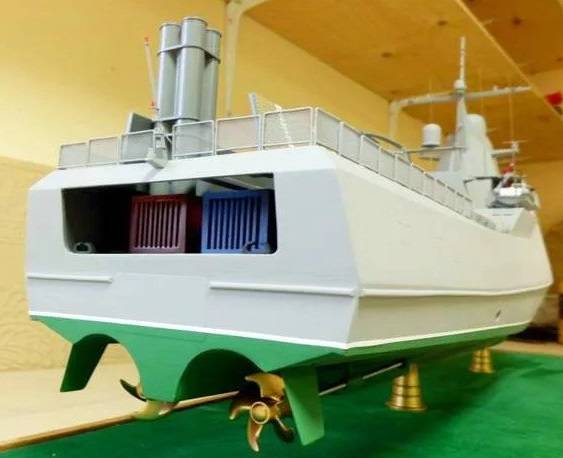
Noteworthy is the placement of the "classic" RIB, later replaced (at the request of the Navy) by a low-seaworthy boat DShL. That is, the developer perfectly understood (including on his unsuccessful experience on the previous project 22460) all the limitations of the project 22160 slip, including its insufficient height ("slaughtered" for the sake of container modules), and in the original project this the height went to the seaworthiness of the RIB with a good deadrise angle. The fleet (Tryapichnikov) "wanted" the "armored turret" of the DSL, and its developers ("Trident") simply had no other options than the "flat-bottomed" (with a small dead-lift angle). At the same time, the Trident designers did their utmost to somehow fulfill the inadequate "wishes" of the Navy ...
However, it should be objectively said that there were other developers who refused to participate in this "project" and harshly raised the question of the inadequacy of the Navy's requirements. The author considers the latter approach to be correct both from the point of view of "professional ethics" and from the point of view of the interests of the country's defense capability.
In parallel with the project 22160, the "promising corvette-frigate" of the project 20386 "started", tough and critical publications on which were previously published on "VO": “Corvette 20386. Continuation of the scam ».
At the same time, on the project 20386 with "modularity" they made a mistake so that a 40-foot container for "Calibers" stood up only instead of a helicopter, while two such containers stood up two times smaller than project 22160 together with a helicopter (the fact of which "on the sidelines "The developers of 22160 loved to emphasize).
Taking into account that the “modular theme” turned out to be “sweet” for the “development of budget” funds by a number of organizations (and “respected people”), despite the already committed catastrophic mistakes, it still continues to be promoted and advertised before the top military-political leadership ...
We have to admit that at the level of this leadership, the understanding of the falsity of these "sweet reports" is just beginning to come. You can compare the president's speeches after the demonstration of the Navy equipment in December 2019 in Sevastopol (including the project 20386 in a significantly modified form), where "modularity" sounded almost like a directive, and the latest decisions on the fleet, where it is tough (in the form instructions of the president), the question was raised about the mass series of classic ships (and in fact, the end was put on the series of "modular" 20386).
Lying in the reports of high-ranking officials is one of the most serious problems not only for the Navy and the armed forces, but also for the country. And here the role of the media in revealing and objectively describing the situation and opportunities is very important (individual media outlets that have been interestedly lobbying the topic of modularity all this time are the subject of a separate conversation).
What did the country and the navy need?
Instead of modularity for the sake of modularity, into which our shipbuilding began to slide, we needed programs for the rational modernization of ships in service, and it was there that the limited (only where necessary) use of modular technologies would find useful application.
Further, this issue will be considered solely on the basis of the interests of the country's defense capability and the high combat capability of the Navy (and not the development of budgetary funds for processes such as "either donkey or padishah").
Modernization of ships of combat strength
Mine action ships (minesweepers)
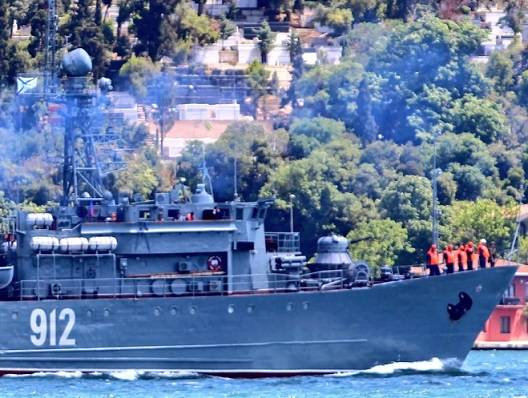
A visual photo: the Turbinist sea minesweeper (MTShch) goes into combat service in the Mediterranean Sea. The ship was built in 1973, the armament of which has not undergone any changes since then, i.e. for a long time this ship has practically lost all combat value and today is capable of exclusively displaying the flag (the topic of the effectiveness of displaying the flag with museum samples is a subject for a separate discussion).
The minesweepers of the Navy did not receive any, even the most minimal modernization, in fact, the anti-mine forces of the Navy have long lost all combat significance.
At the same time, in other countries, even old minesweepers are being successfully modernized and are quite capable of solving modern problems.
We had all the opportunities for this, a qualitative modernization of the MG-89 sonar was started (not completed, since the Navy was not interested in this work), a container modification of the mine action complex was created (successfully passed all tests and received the letter O1) Mayevka "with TNLA. The "container" "Mayevka" was even in the state defense order, but it turned out to be deleted from it and in fact was deliberately destroyed.
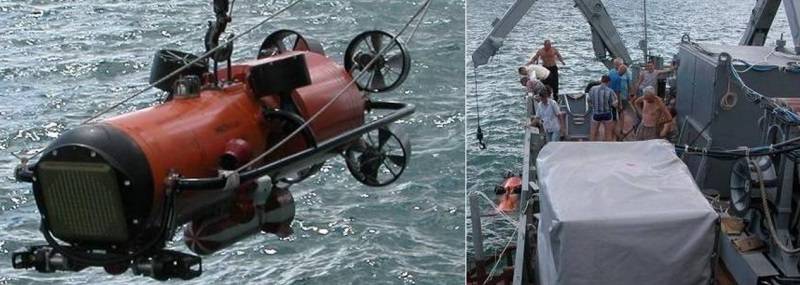
Have we carried out work on modular PMO systems? Yes, but their level was, as they say, on the verge - both by their absolutely fantastic and obviously ineffective appearance, and by inadequate stuffing of all this in 20-foot containers, which simply could not be put on the minesweepers of the combat composition (only on 22160 and 20386 projects). Moreover, this topic in the Navy received a mockingly "compact" name.
Small anti-submarine ships OVR
Project 1124M MPK are excellent hunting ships for their time. However, the armament of the project of the 60s was objectively obsolete, and during the modernization of the ship, the reserves of displacement and stability were exhausted. Responsible persons said that the project 1124 can be given up.
However, the new weapon systems, as a rule, had significantly less weight than the old ones (especially those made on an electromechanical base), i.e., with modern modernization, the displacement and stability reserves would be restored! Moreover, the MPC successfully tested new digital electronic units for new hydroacoustics. That is, they were technically absolutely compatible with the old GAS. Take and upgrade! But not a single MPK has received such a full-fledged modernization, despite repeated appeals to the Navy by the designer (ZPKB) and its chief designer.
The Navy also showed absolute indifference to Okeanpribor's proposals to create a compact towed active-passive GAS (using the Barracuda design and development work backlog), suitable for equipping not only ships of size MRK project 22800, but also much less, including up to unmanned boats (BEC).
Instead of two-tube torpedo tubes DTA-53, a "Packet" normally stood on its foundations (with the possibility of using both torpedoes and anti-torpedoes).
Back in 2015, it was decided to replace the Osa-MA air defense missile system with the Tor-FM at one of the Black Sea Fleet MPK. Until now, nothing has been heard about the real start of work on this solution.
After the issue with the afterburner of the power plant (Ukrainian turbine) was closed in 2014, the fleet actually gave up on the IPC.
Small missile ships (MRK) of project 12341
The modernization of these ships was planned back in the USSR, with the replacement of the Malachite missile weapon system (KRO) (6 anti-ship missiles) with the newest Onyx (12 anti-ship missiles). The KRO "Onyx" itself passed part of the tests at the RTO "Nakat".
The tests showed a large excess "top weight" of 12 "Onyxes" and significant restrictions on their use in stormy conditions from the project 12341. However, nothing prevented the reduction of the number of "Onyxes" or the supply of 12 lighter "Calibers".
Comparison of the "calibrated" RTOs of the old project 12341 shows its absolute superiority in performance characteristics over the "newest" RTOs of the Buyan-M project.
Yes, the design standards have changed and today it is simply legally impossible to repeat something like Project 1234 (the maximum that is technically possible is to watch Project 22800), but the ships were already in the Navy, for the most part had a sufficient resource. The modernization of the MRK project 12341 was the fastest and most effective version of the "calibrating" of the Navy, alas, lost today.
At the same time, instead of a series of unsuccessful MRK Buyan-M, the same Zelenodolsk plant could produce a series of new small OVR corvettes.
Frigates and patrol ships
Until now, the Black Sea Fleet has two Project 1135 TFRs in their "pristine" (from construction) form.
Is it okay to show a flag? And if there is a war? Which we almost got (with Turkey) in 2015?
And what about Turkey itself? And it modernizes its old ships: both frigates and old anti-mine ships (like, for example, minesweepers of the Searse type, the same age as the Turbinist). Specifically for frigates: the old ex-American "Perry" received new ones, including modern ones, radar and air defense systems (with UVP Mk41).
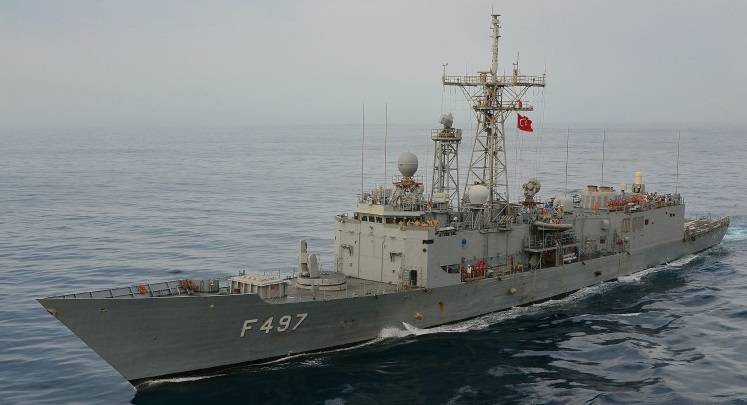
Don't feel like messing with old ship hulls? There are simpler solutions.
We have safely forgotten that new missiles (Onyx, Caliber, Answer) are capable of launching from inclined launchers (PU). At the same time, this is well remembered, for example, in the Indian Navy, where there are both vertical and inclined launchers of new missiles. And where they normally modernize old ships, incl. domestic construction.
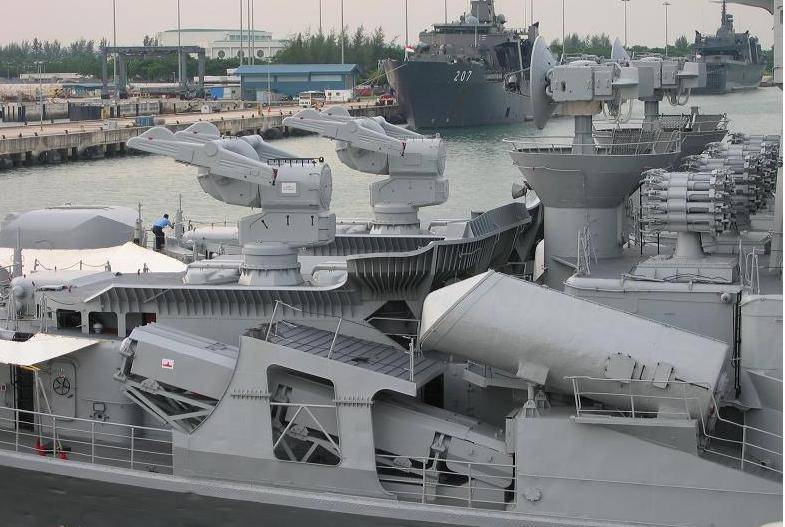
Problems with the placement of the air defense missile system in the building? In a number of NATO countries, deck-mounted aircraft are successfully used.
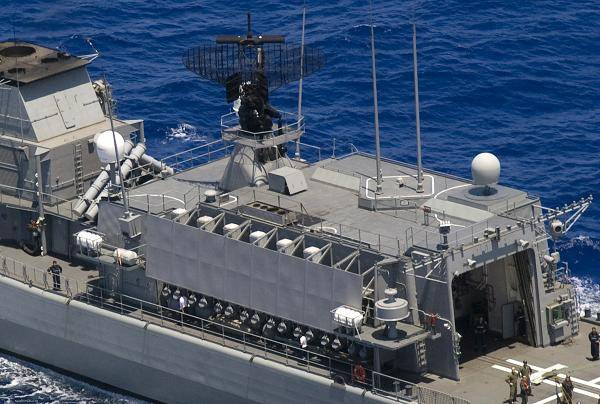
They do not shun in the "Wild West" and "antique" manual reloading of missiles, as, for example, on the RAM / ASMD air defense system, which, however, can be put on almost everything - starting with small missile boats.
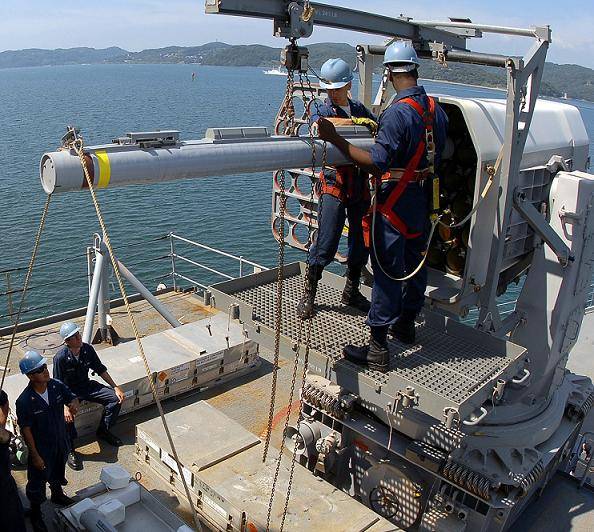
Finally, almost sacrilege, something that was much talked about in the 90s and early 2000s (but they suddenly forgot, as soon as the question arose about the development of budgetary funds in a series by our huge defense industry concerns): unified modular consoles of complexes! Today we have a situation when they drag their own “computer” to almost every "fighting pencil". It is ordered to forget that there may be several (or even one) of these "computers".
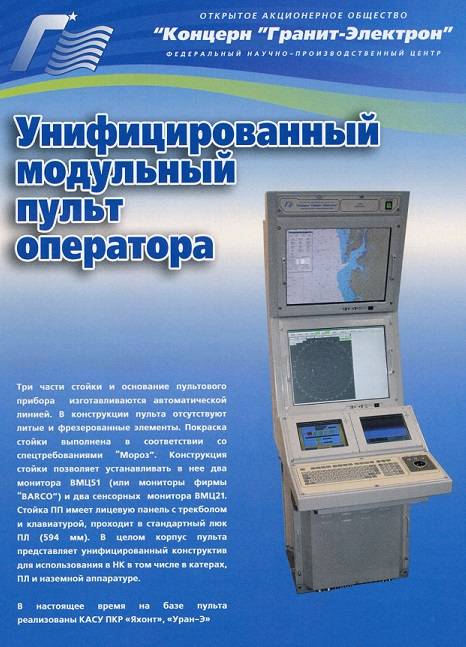
Accordingly, when the question of the introduction of new weapons on old ships arises, objections of the type immediately begin: without a BIUS for 1,5 billion, this is allegedly impossible.
For example, "Packet" can be fired from a laptop. Moreover, its capabilities are wider than with a standard control rack. And there are no technical problems in integrating the “Packet” firing task, for example, into modern bridge systems of ships.
With this, the fleet will be a big plus in combat capabilities. But certain defense industry organizations are clearly a disadvantage. When the torpedo firing system starts to cost more than 300 million rubles. (as it turned out during the modernization of "Shaposhnikov"), "something needs to be urgently corrected at the conservatory."
And to begin with, make a strong-willed decision. Does the Navy exist for the country or does the Navy exist for the development of budgetary funds by certain organizations? ..
The main value of “modularity” is the solution to the problem of what to do with expensive new complexes after the decommissioning of old ships. The Navy's practice is to send all their weapons to scrap. Exceptions are rare and only confirm the general rule. The maximum that is being done (and then at the initiative of the personnel) is the replacement of faulty parts on ships of the combat strength with serviceable ones from the decommissioned one. In practice (90s - 2000s) it came to the rearrangement of the air defense system (!).
At the same time, we have a large fleet of new patrol ships as part of the FSB security guard, which have extremely weak weapons on a regular basis. There was a widespread opinion (including at the "top") that the fleet had its own tasks, and the SOBR had their own. At the same time, the fleet has an extreme shortage of ships, and the combat capabilities of the PSKR BOKHR unambiguously define them in the category of "game" in the event of any serious conflict.
A good question: what would the PSKR Bokhr do in the Black Sea if hostilities with Turkey began in 2015? Would they have huddled in the base (holding up a banner "Please do not shoot at us, we are modest and weak FSB ships!")?
Obviously, one of the key issues here is financial. Who should pay for the mobilization readiness of the SOBR? And it is obvious that most of these costs should be borne by the Ministry of Defense. This is, first of all, a stock of combat systems (and their ammunition) for the PSKR BOKHR.
However, funds are not enough simply for new ships - and where in this situation can we get the "border guards"? The answer is modularity. Optimal modernization of old ships with new complexes should ensure their easy reinstallation on other ships (primarily PSKR BOKHR) and, if necessary, conservation for basic storage.
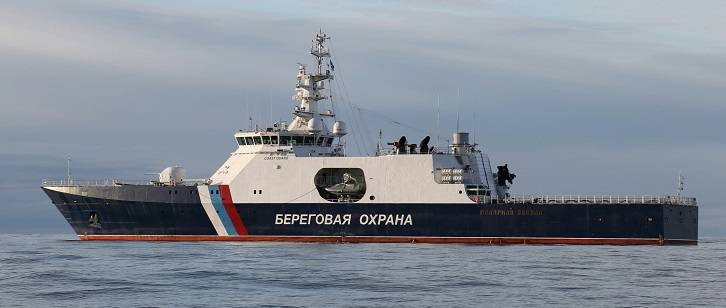
It is appropriate here to recall the experience of the US security forces, which always provided for a mobilization military option for the use of patrol ships (with appropriate additional equipment).
At the same time, the enhancement of armament is also relevant for many ships of the Navy, for example, "disarmed" (in the course of finalizing the project) BDK project 11711 or ships of the combat strength of the main classes, in cases of emergency reinforcement of their weapons when the military-political situation in a specific theater of operations aggravates.
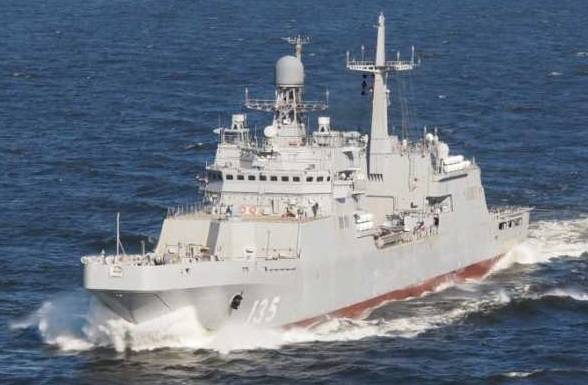
New ships
An extremely acute issue of domestic ships is their modernization and repair suitability (including after combat damage). The situation when it is easier to build a new one than to repair an old one is extremely acute for us, and here the application of zonal principles can be very useful.
And the last question: could the missile containers (with which the fleet was worn) come in handy? Yes, they could, in a situation where the INF Treaty was in force, but as a quick-change armament for carriers of the Dugong type DKA.
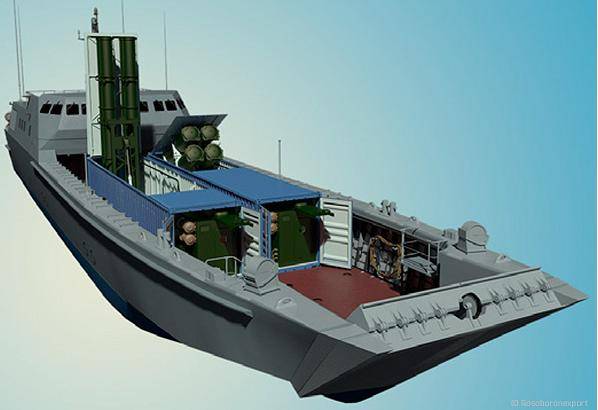
In this case, the use of missile containers should have been carried out in the "basic conditions" of minimum excitement.
War, a salvo is immediately fired at already assigned targets, and after half an hour or an hour the carriers are already unloaded from empty missile containers, and loaded, for example, with mines.
Such a scheme of application made sense, but today the INF Treaty has been canceled.
Conclusion
We need technical and organizational solutions (including in terms of modularity) that provide fast repair and modernization of combat personnel (including long service lives), the most effective and long-term use of expensive weapons of modern ships.
These measures require certain costs: financial, displacement reserves (and a reduction in the share of weapons), the assessment of which must be comprehensive, at the level of at least an interspecific grouping of forces in a theater of operations.
At the same time, the construction of deliberately flawed ships (22160 for us and LCS in the USA) for the sake of "new approaches to ship architecture" (a phrase from one of our documents) can not justify anything.
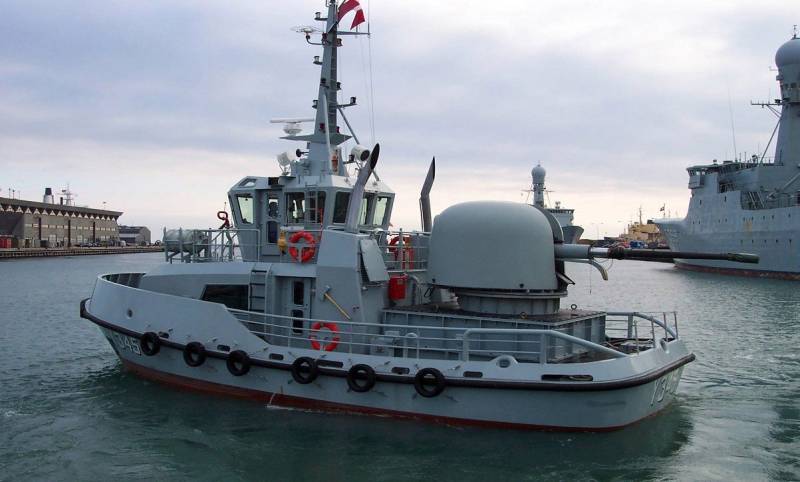
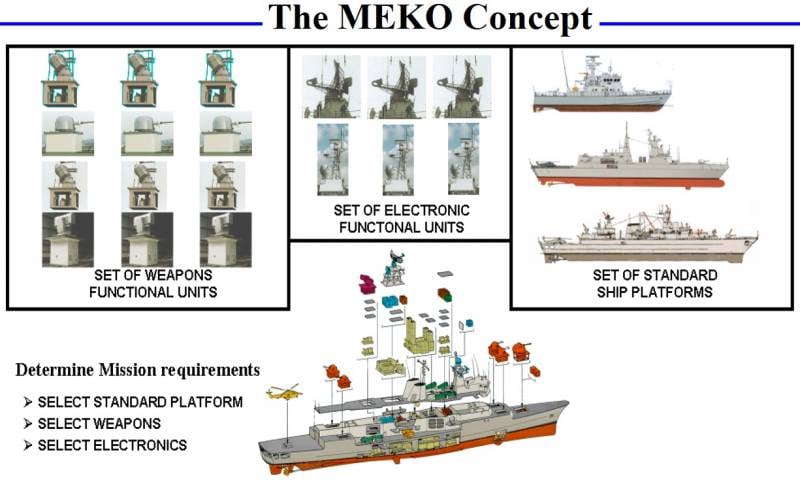
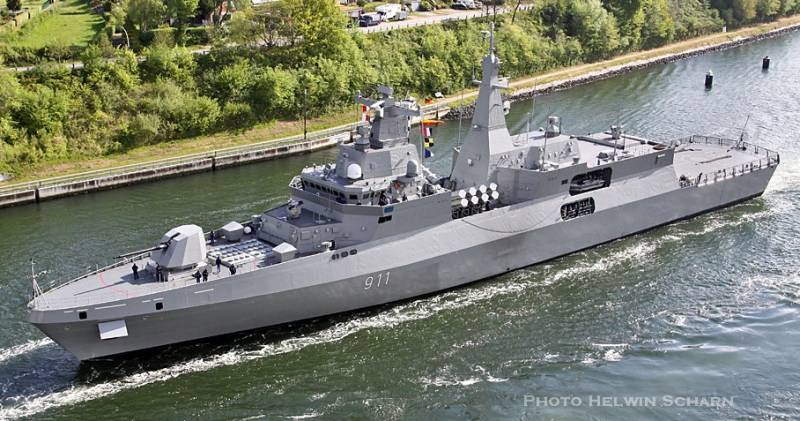
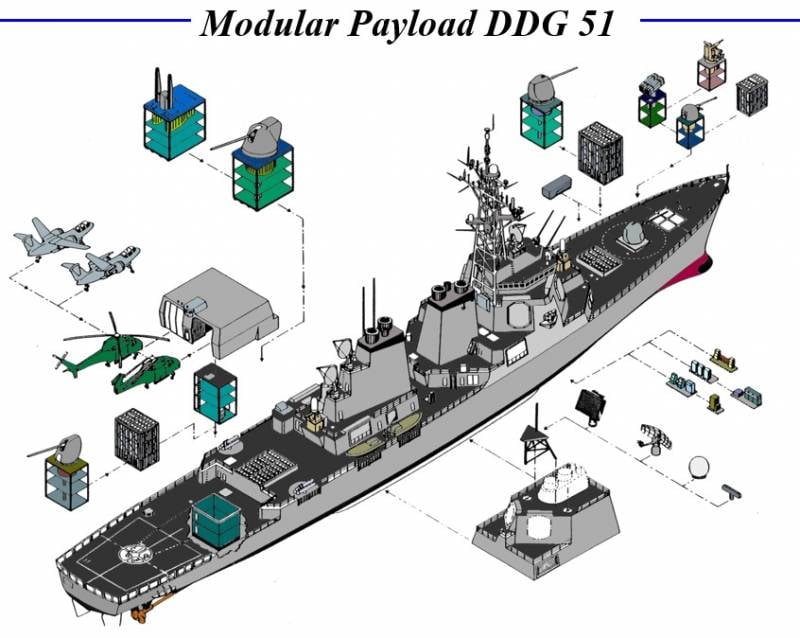
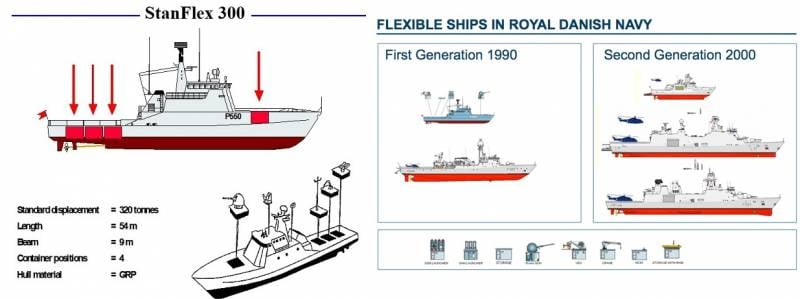
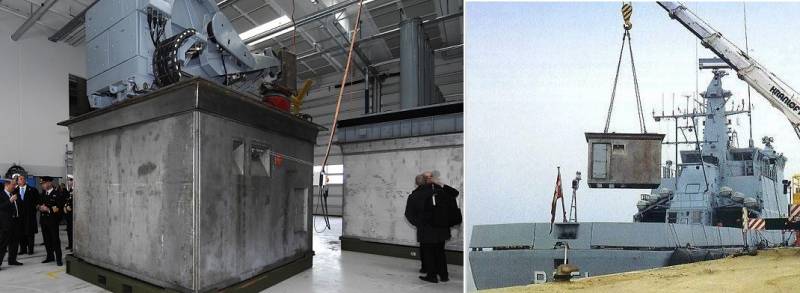
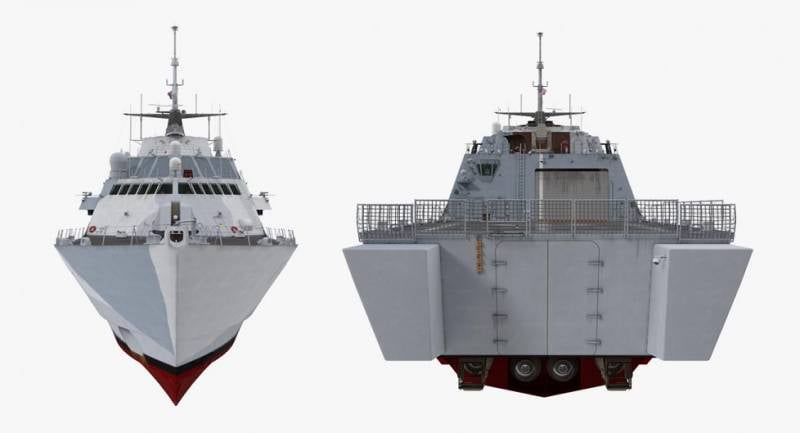
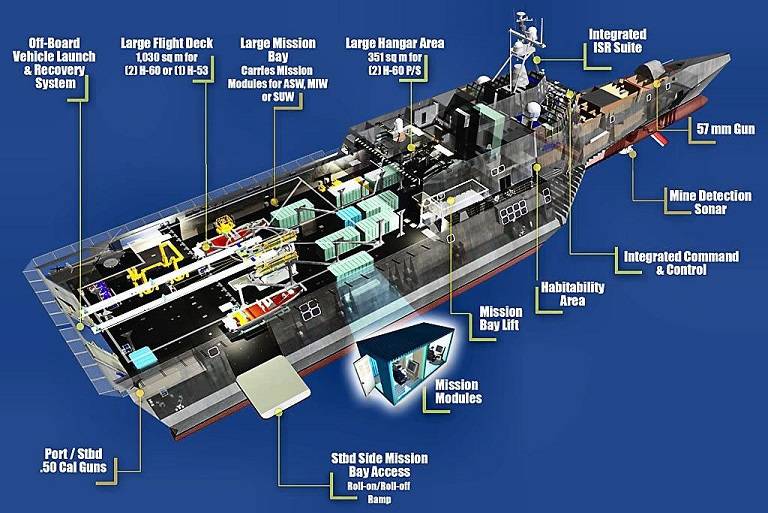
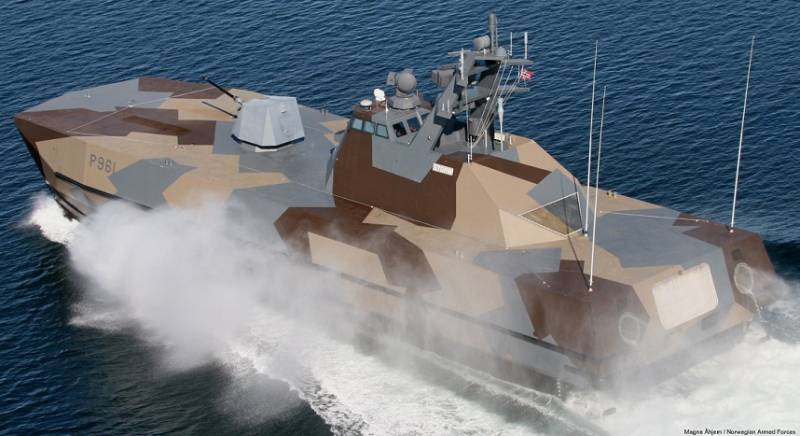
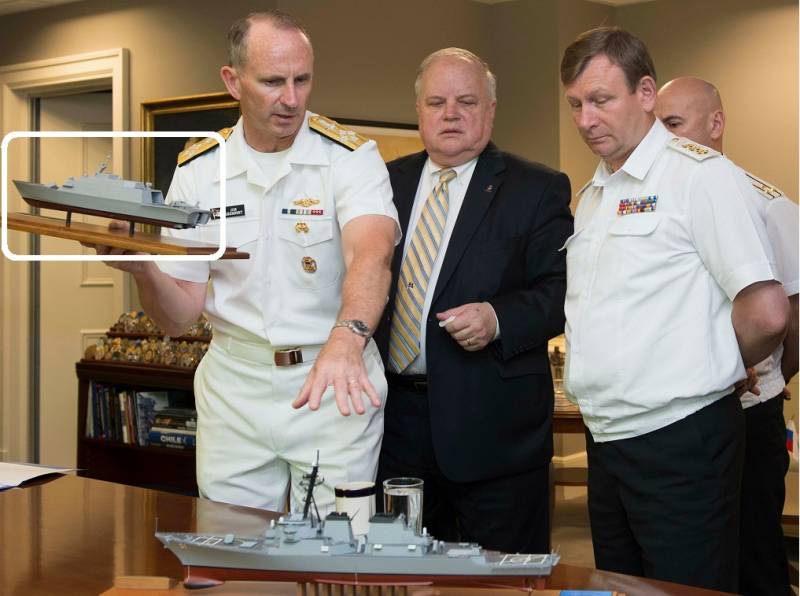
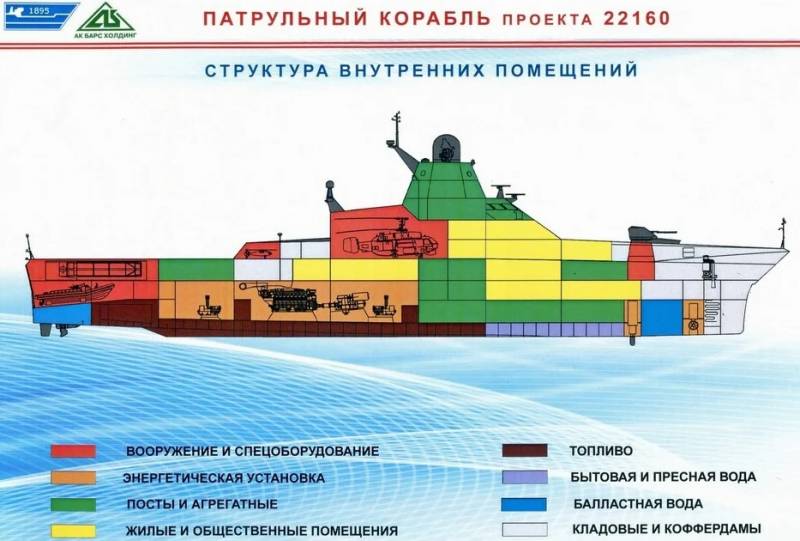
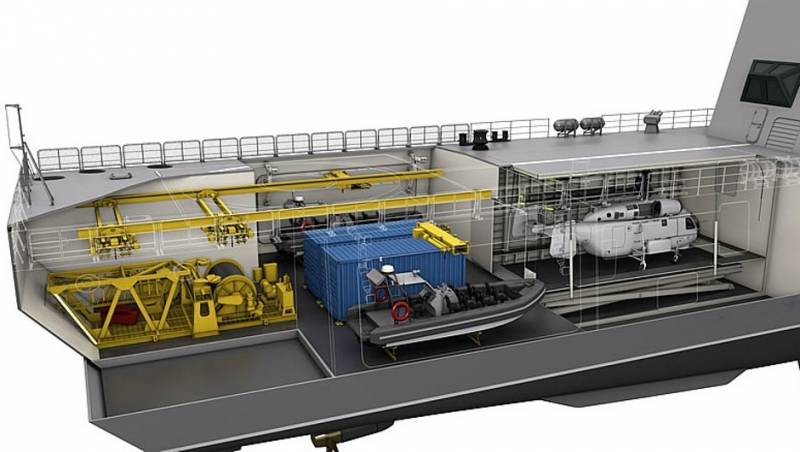
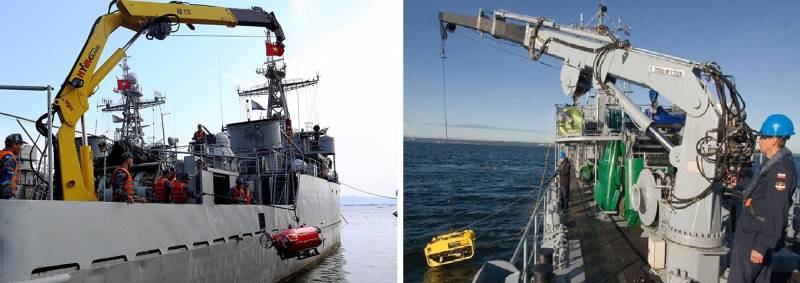
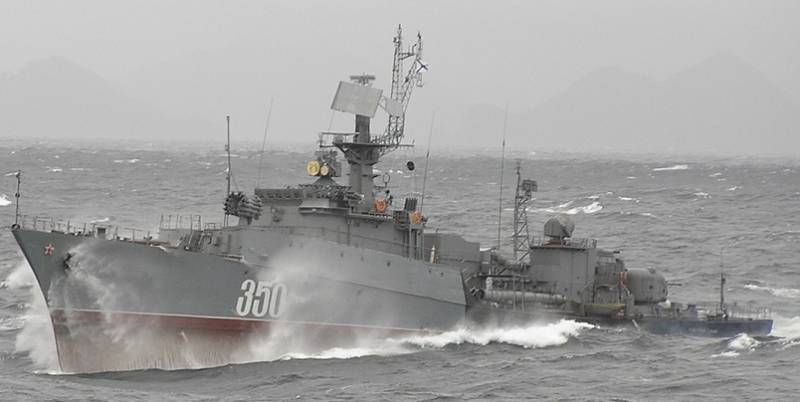
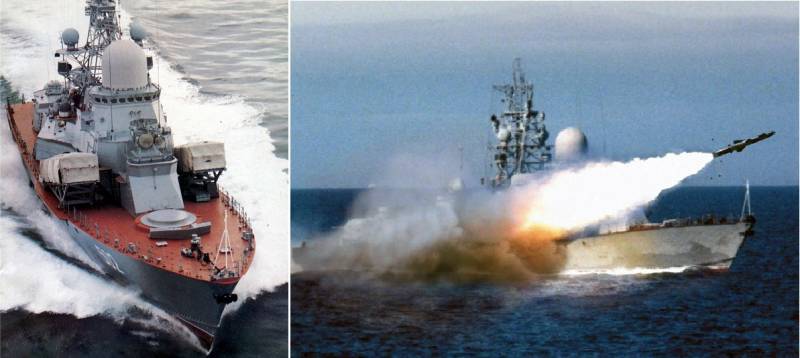
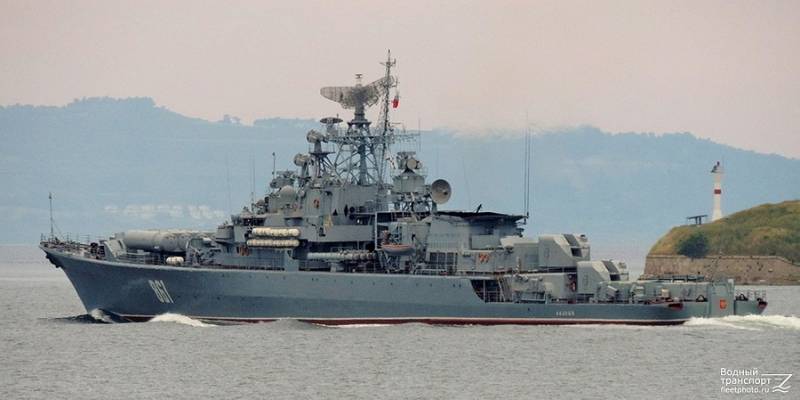
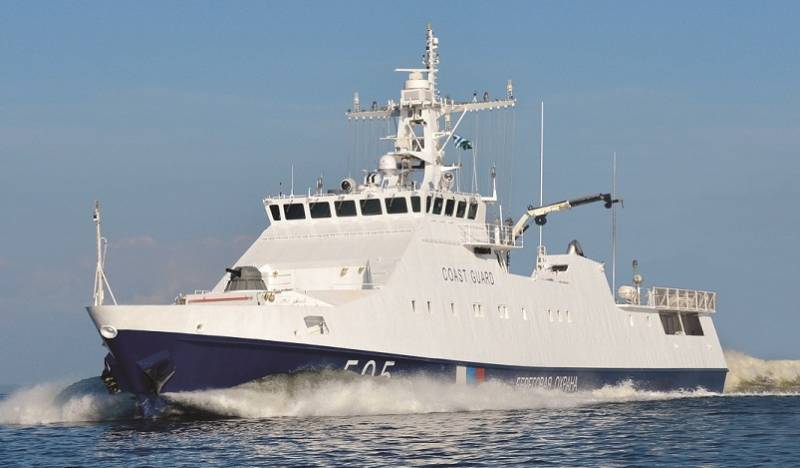
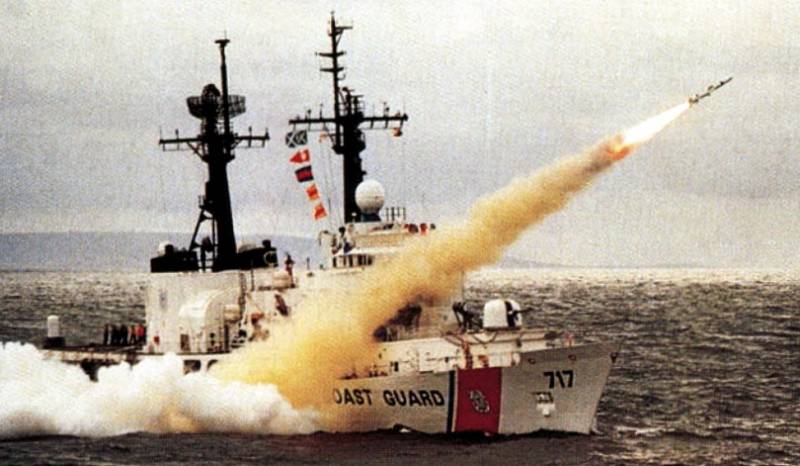
Information